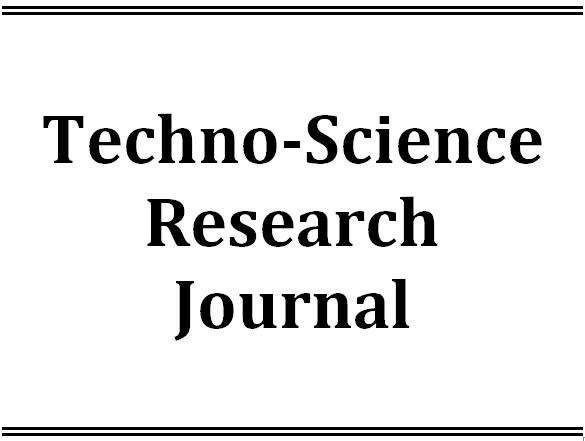Latest Issue
Empowering Education with Online Khmer Handwritten Text Recognition for Teaching and Learning Assistance
Published: August 30,2025Undergraduate Student Dropout Prediction with Class Balancing Techniques
Published: August 30,2025Status of Seawater Quality at Koh Rong Island, Sihanoukville, Cambodia
Published: August 30,2025Low-Complexity Detection of Primary Synchronization Signal for 5G New Radio Terrestrial Cellular System
Published: August 30,2025Word Spotting on Khmer Printed Documents
Published: August 30,2025Tuning Hyperparameters Learning Rate and Gamma in Gym Environment Inverted Pendulum
Published: August 30,2025Examining Passenger Loyalty in Phnom Penh Public Bus System: A Structural Equation Modelling Approach
Published: August 30,2025Prediction on Load model for future load profile of Electric Vehicle charging demand in Phnom Penh
Published: August 30,2025Economic Study on Integrating PV-DG with Grid-Tie: Case Study in Cambodia
Published: August 30,2025Application of CROPWAT model to estimate rice water requirement at field scale in Cambodia
-
1. Department of Rural Engineering, Institute of Technology of Cambodia, Russian Federation Blvd, P.O. Box 86, Phnom Penh, Cambodia
Academic Editor:
Received: January 20,2024 / Revised: / Accepted: January 20,2024 / Available online: June 01,2015
Field experiment with the dimension of 47.7m × 55.5m were performed at Cambodian Agricultural Research and Development Institute (CARDI), Cambodia, from July 2013 to May 2014 to calculate the reference and crop evapotranspiration, and collected requirements input data for the CROPWAT model to estimate the rice water requirements of two seasons. Two types of rice crop was taken in this study. Phka Rumdoul rice, 120 days growing period, was observed in rainy season, and Chu’lsa rice, 100 days growing period, was taken in dry season. The rice crop coefficients were divided in two types, Kc (wet) were 1.05, 1.1, 1.2, 1.05, and Kc (dry) were 0.3, 0.5, 1.05, 0.7; in the initial, development, mid-season and late-season stages, respectively. With implementation of CROPWAT model, followed FAO Paper No 56 Penman-Monteith method.
In the rainy season, water requirements of Phka rumdoul rice and average of evapotranspiration are 494 mm and 4 mm/day. In the initial stage, ETc is around 70 mm, but ETc much increases in late-season, approximately 179 mm since there high wind flow, while ETc in the mid-
season is around 174 mm, and 72 mm at the development stage. In contrast, water requirements in dry season of Chul’sa rice and average of
evapotranspiration are 518 mm and 5 mm/day. In the initial stage, ETc is around 73 mm, but ETc much increases in mid-season, approximately 180 mm, while ETc in the development is around 150 mm, and 116 mm at the late-season stage.

